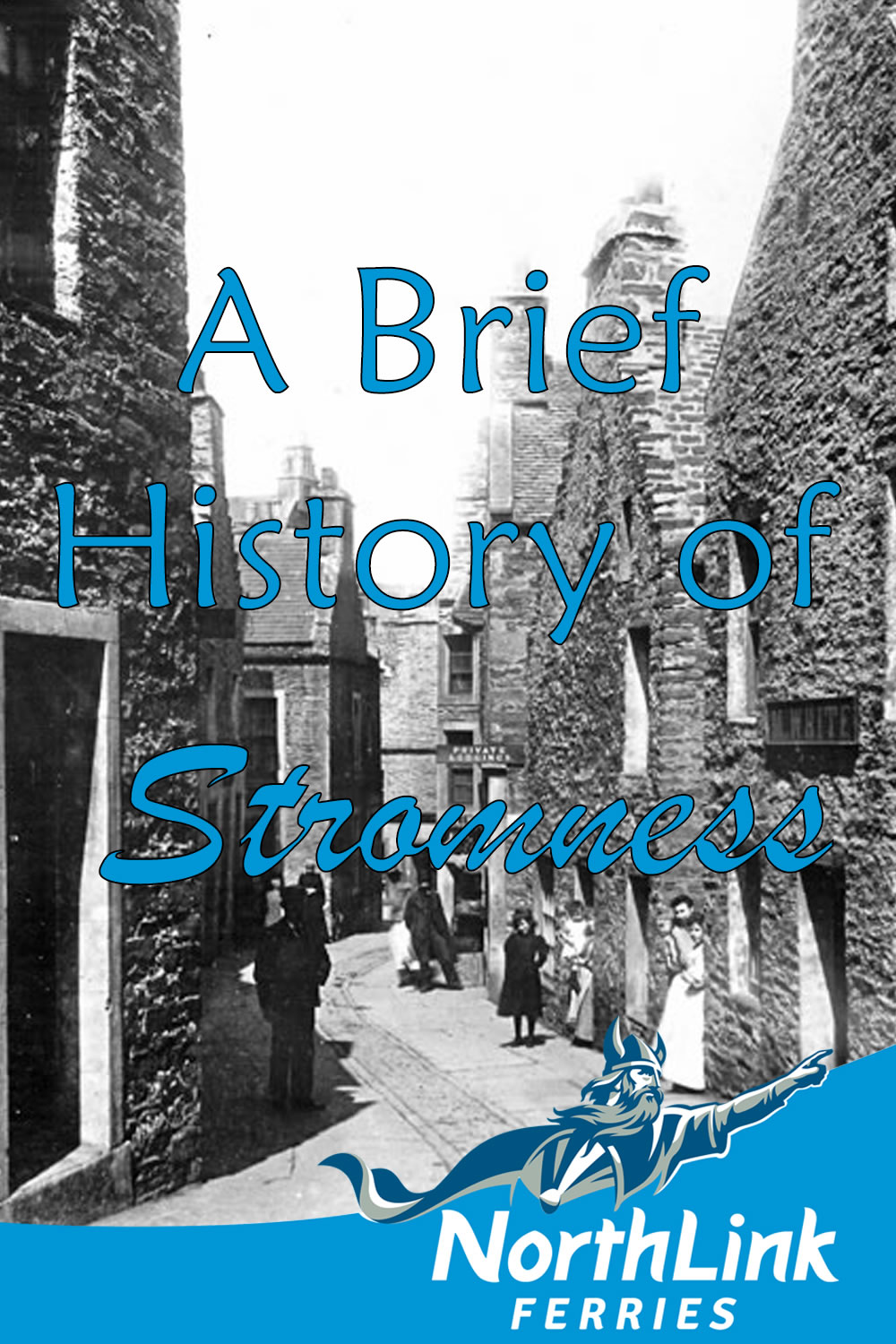A Brief History of Stromness
Early times
The Vikings named the area Hamnavoe, which meant ‘haven bay’, a safe anchorage. It was sheltered from everything but a south-easterly gale. Though it was a popular base for fishermen, Stromness didn’t really come into being as a settlement until after the 16th century, when explorers and merchants started sailing around the North of Scotland to across the Atlantic.
The Hudson’s Bay Company ships would make a last stop in Stromness to stock up on goods before sailing across the Atlantic. They started recruiting in Stromness in 1702 and by the end of the century, three quarters of the men employed by the Hudson’s Bay Company came from Orkney.
A tavern to cater for visiting ships was built in 1595. As more shipping began to shelter in Stromness, merchants from South settled in the area, after hearing there was money to be made.
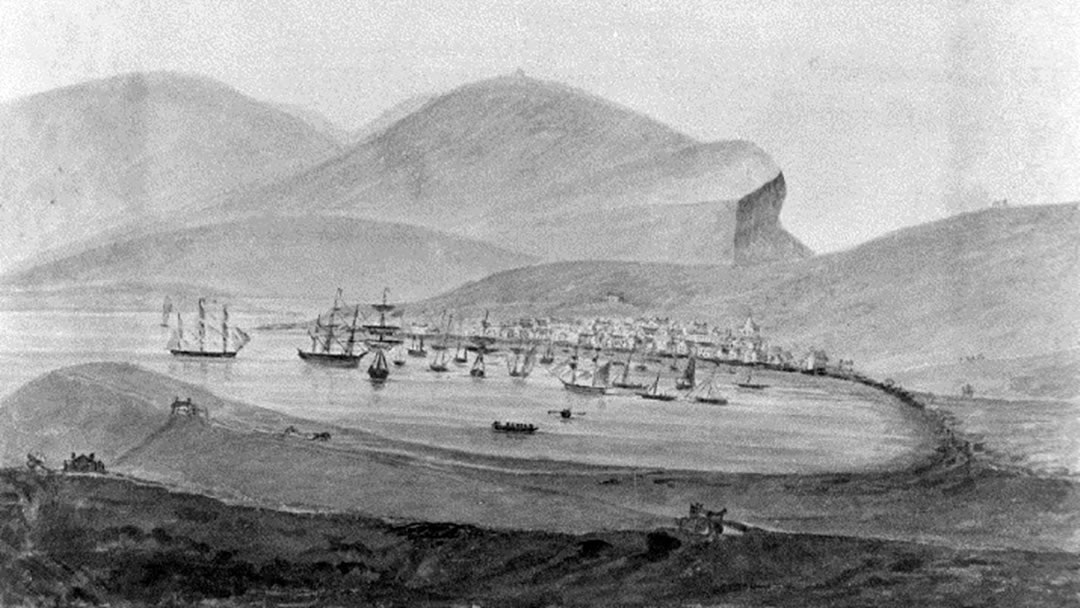
Chalmersquoy
Stromness today is characterised by older waterfront buildings on the western shore and new houses which are built on the eastern shore at Cairston. It would surprise Stromness residents to learn that the very first building of the town was constructed on the eastern shore!
The land on the western shore under Brinkie’s Brae belonged to the Church and it was rough, heathery and used as grazing ground for sheep. The Bishop did not expect, in the 1620s, to be asked by merchants and tradesmen for leases of land over on the rocky western shore of Hamnavoe. One of these was a blacksmith by the name of Chalmers. He built himself a pier and workshop for the convenience of shipping. This area was named Chalmersquoy and many businesses sprang up here; offering repairs and provisions to ships that needed shelter and the correct wind to set sail.
The flagstone to build Stromness came from the shore at the Point of Ness; an area called ‘the quarries’.
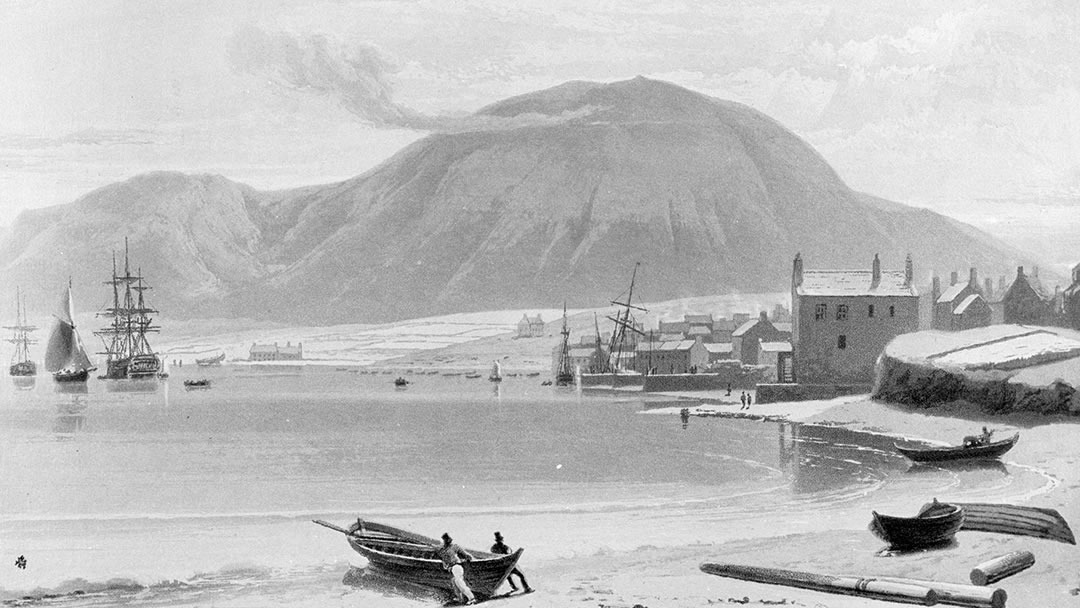
Dangers in the English Channel
Between 1688 and 1815 there were sustained periods when Britain was involved in wars, ending with the Napoleonic wars (1803–1815), and the English Channel was dangerous to pass through. Many ships passing to and from the Atlantic chose a northerly route, and called at Stromness for shelter, provision and ship repairs.
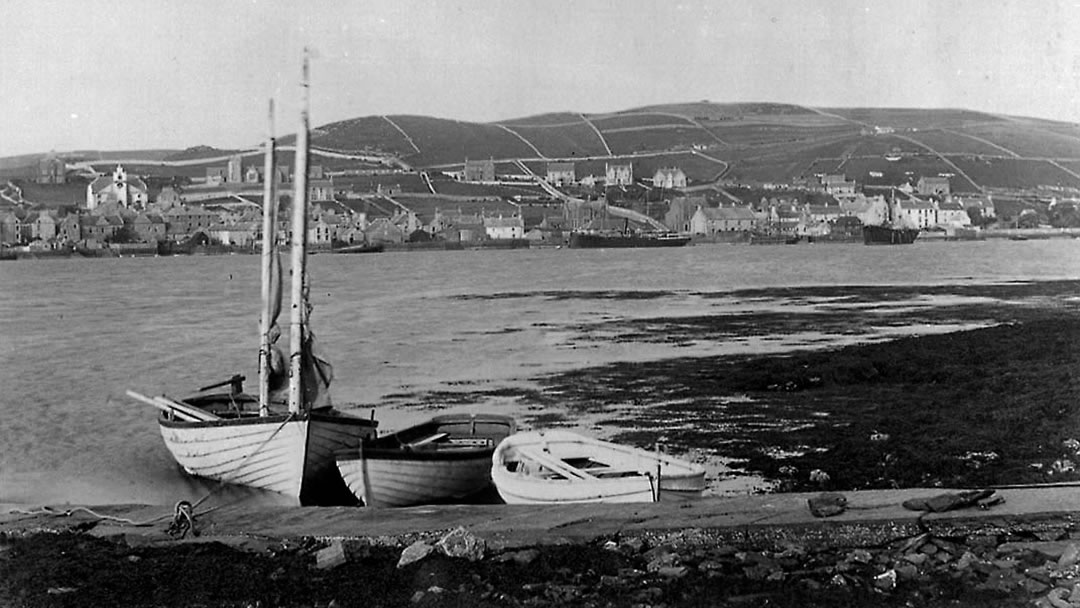
The early houses and piers of Stromness were built on the western shore of Hamnavoe. When they ran out of space, they began building on the opposite side of the street and up the hill. As well as businesses offering repairs and provisions for visiting ships, there were over 80 drinking parlours in Stromness; ranging from inns to enterprising folk making a home brew in their kitchen.
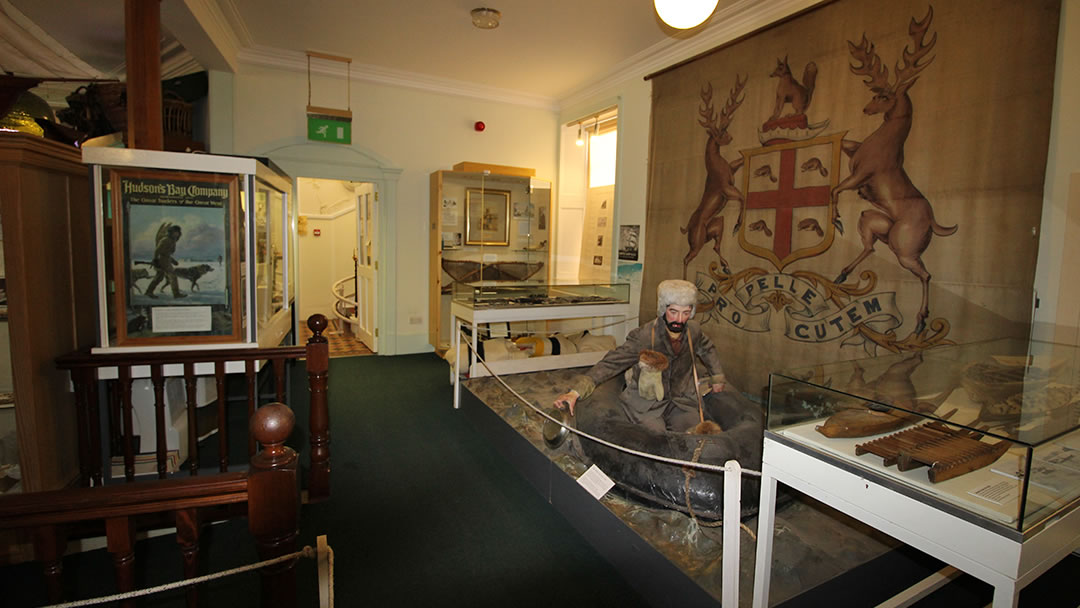
The Hudson’s Bay Company
The London-based fur-trading Hudson’s Bay Company became an important source of employment for Orcadians who had become fed up with subsistence living on poorly-run crofts. The Hudson’s Bay Company started recruiting in Stromness in 1702. Though their ships set sail from London, many of the men there were signed on to the Navy. The Hudson’s Bay Company ships would make a last stop in Stromness to stock up on goods before sailing across the Atlantic.
The ships would arrive in Canada at their fur-trading posts around Hudson’s Bay. Each year, in late summer, the native peoples would bring in cured beaver pelts, ready to be dispatched back to London. In exchange they would receive axes, knifes, blankets and other desirable European goods. By the late 18th century, three quarters of the men employed by the Hudson’s Bay Company came from Orkney. An agent was appointed in Stromness in 1791 to employ workers and deal out wages.
Many of the men working in Canada took native wives. Initially this was frowned upon but it was actually very good for the Hudson’s Bay Company because it gave the men a family life and improved the connections with the native traders.
As Canada developed there was less need to import a workforce from Orkney. The country had all the supplies and resident workers they needed. The links between Orkney and the Hudson’s Bay Company lasted for many years though, and men from Orkney were still signing on in the 1930s.
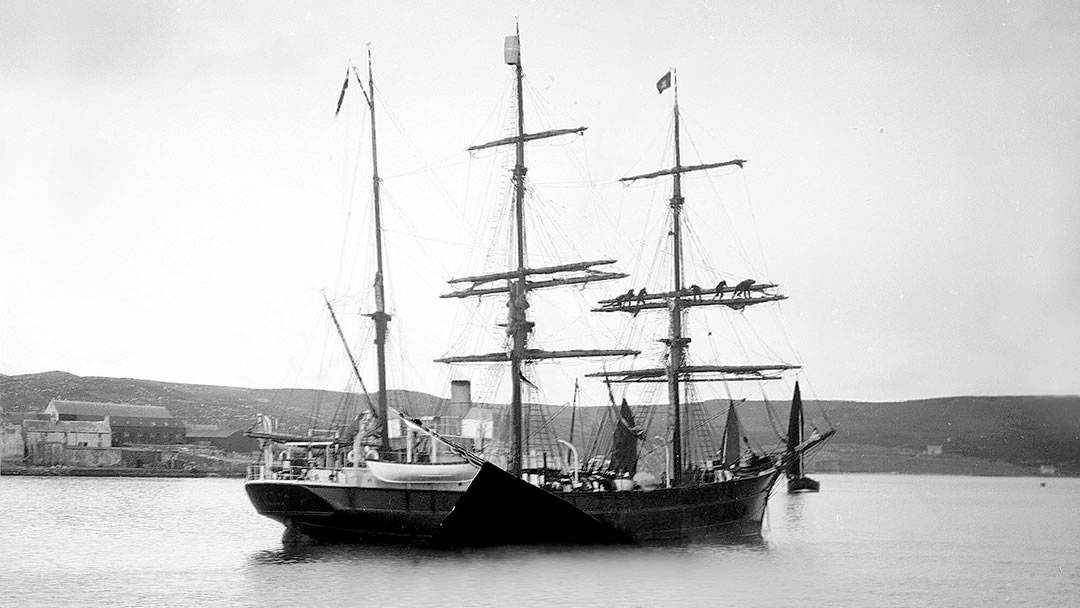
Arctic Whaling
From 1770 until 1870, Arctic whaling ships from the East coast of Britain took on crew in Stromness. Many whaling ships would gather in the harbour at the same time, and the inns did a healthy trade!
As time went by, there were fewer whales to catch and the whalers had to go further to catch them. This led them into very dangerous waters in the Arctic. A makeshift hospital was set up in Alfred Street in Stromness for a couple of years in the 1830s. This was to treat scurvy and frostbite in whalers who had been ice-locked over the winter.
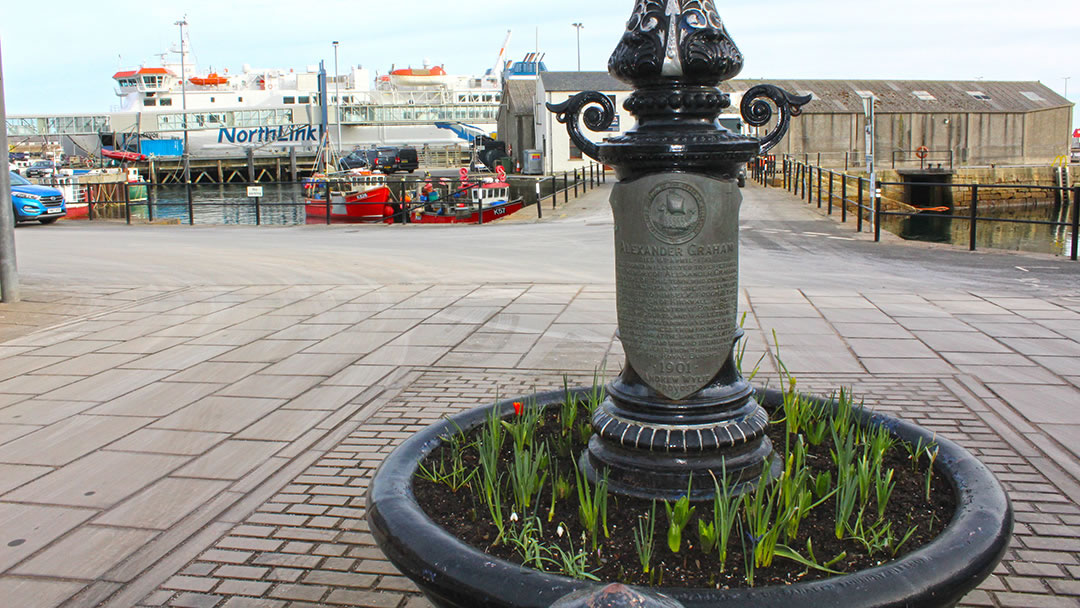
Stromness versus Kirkwall
The ancient Royal Burgh of Kirkwall resented the upstart village of Stromness. Believing that the merchants of Stromness were stealing their exclusive rights to foreign trade, they imposed a tax on them. When the merchants refused to pay, it took some twenty years of legal battles to free them from taxation by Kirkwall, in the year 1756. Alexander Graham who led the revolt mortgaged his estates to pay the legal costs, but was bankrupt when his associates refused to refund his expenses. A hundred years after his death, a horse drinking fountain was erected at the Pier Head in his memory.
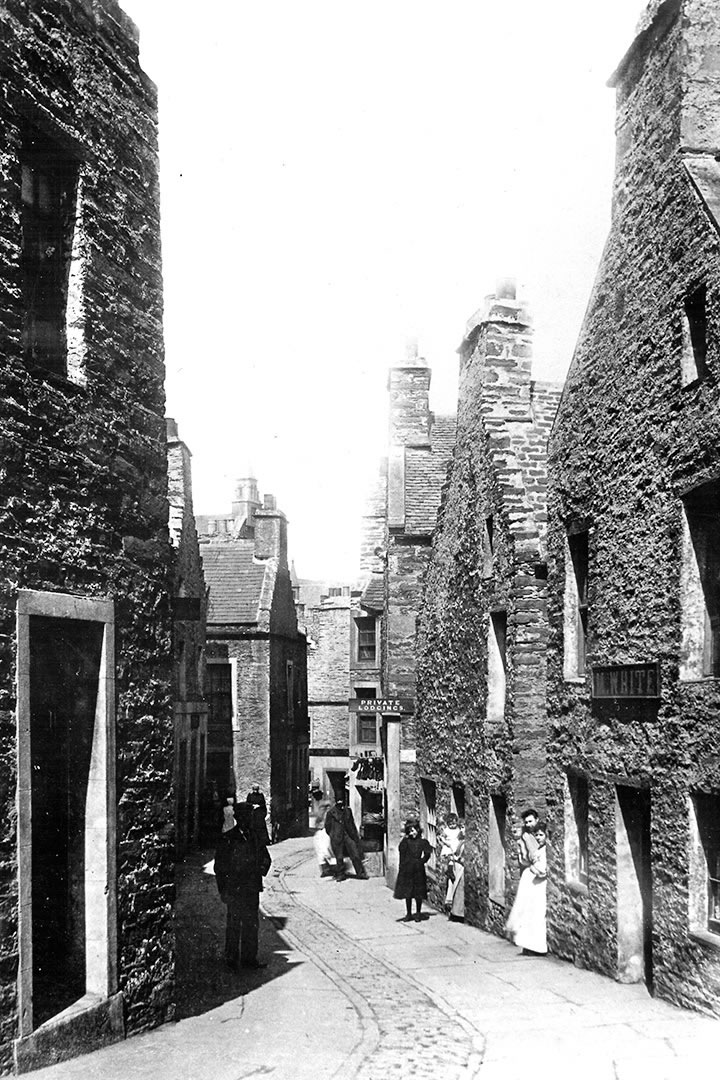
A Burgh of Barony
During the Napoleonic wars Stromness had been a very busy seaport, but it was also unruly and filthy. The merchants applied to the Crown for the status of Burgh of Barony, whereby they might control trade, law and order and establish public amenities. The Royal Burgh of Kirkwall filed an objection, but Burgh of Barony was granted on 18th February 1817.
The Stromness Town Council was set up, but they were penniless and had no means of raising money. They were now able to hold an open air market but initially the traders were not keen to pay rent! A Government Act in the 1850s called the Police Act empowered the Town Council to levy a rate and this money enabled the Councillors to improve the town by laying down flagstones and installing street lighting, first oil lamps, and then later gas lamps.
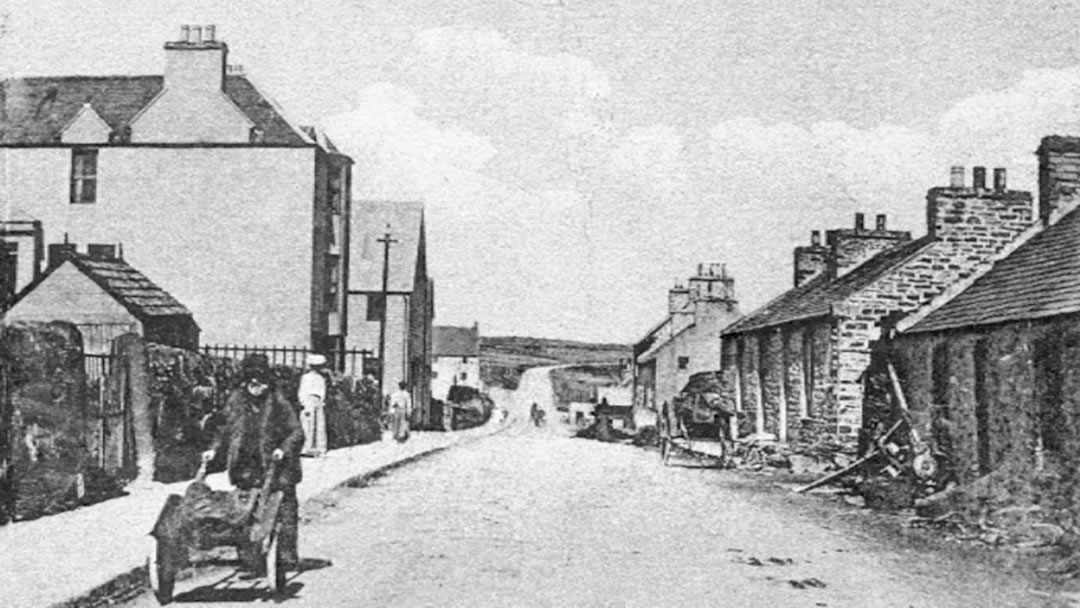
Becoming a Market Town
When Stromness was initially constructed on the shore it wasn’t built for any kind of wheeled transport. The transportation of goods usually came from the sea. There were steps on the main street and it was rough and muddy. In some places the street was only 4ft wide!
In the 19th century, farming methods had improved and had brought real prosperity to Orkney. Stromness became a market town for the surrounding parishes and islands. Cattle were transported south from the town by regular steam shipping. As time passed buildings were demolished so that wheeled transport could travel from one end of the town to the other.
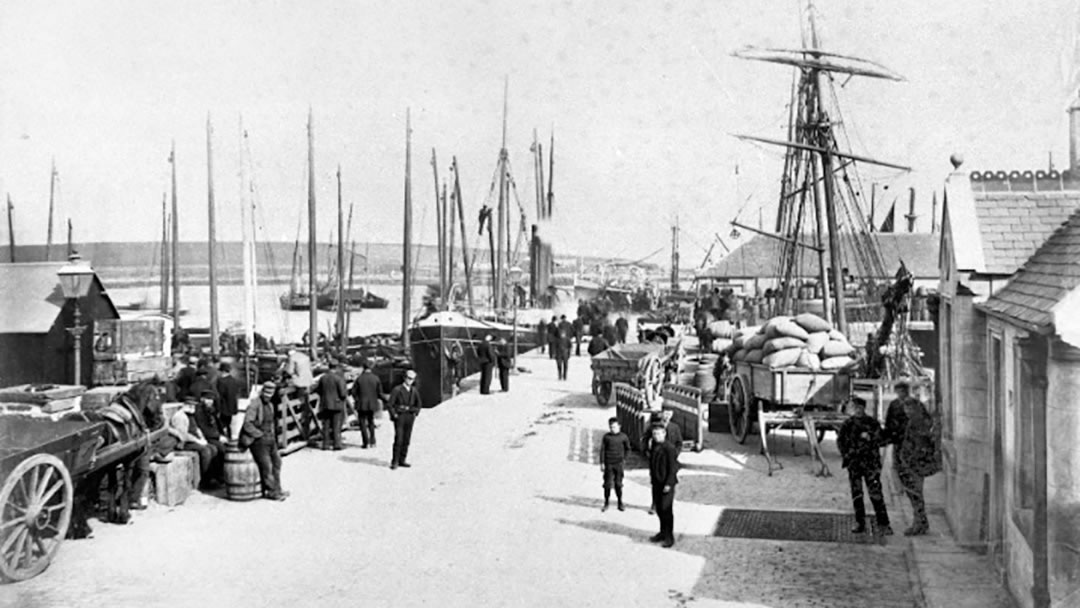
In the late 19th century Victorian Villas began to spring up on the hillside. These were built by merchants and sea captains. Orkney men were going to sea and becoming skippers on commercial routes around the Atlantic and to the Far East. A great amount of commercial shipping was taking place and the money came back to Stromness. These Victorian Villas were given names by their owners of ships and trading posts; houses such as Thistlebank and Arranmore.
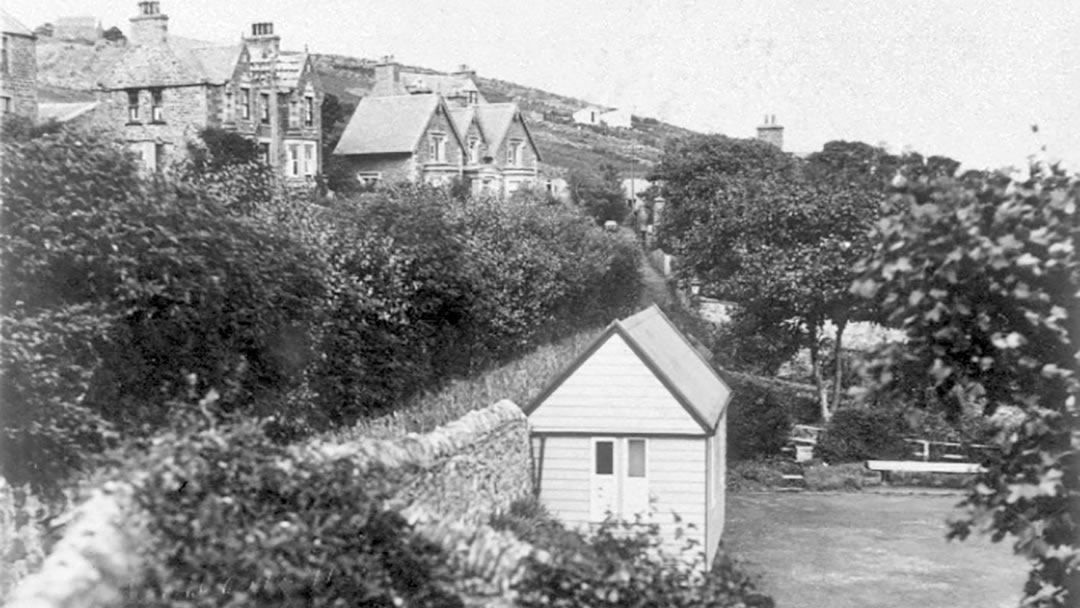
In 1839, Stromness Museum was founded and it moved to its present location in the South End of the town in 1862. Today it is an essential place to visit to learn more about the town’s fascinating history!
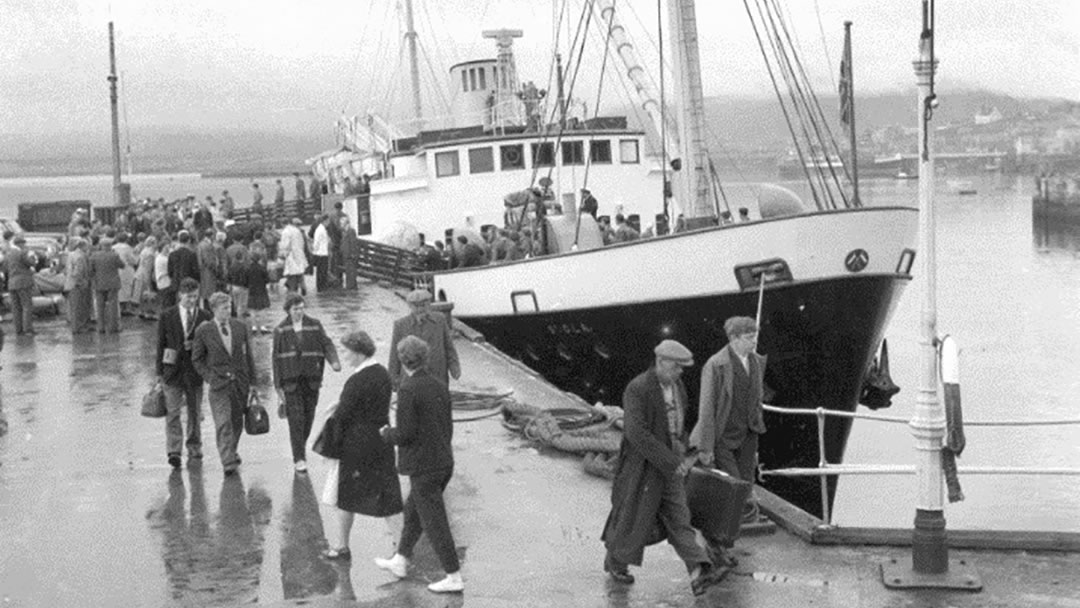
The ferry service
The ferry to Orkney ran, weather permitting, for a long time from Huna in Caithness to Brims in Longhope, Hoy. It was a post boat, a small open boat around 20 ft. long, however there was no such thing as regular mail. If the mail arrived in South Ronaldsay it would be transported across several islands by small boats. Then it had to go from Holm to Kirkwall and then on to Stromness. In those days the roads in Orkney were very rough, so a letter took a long time to arrive in Stromness.
When the railway brought modern transportation to the North of Scotland, it also brought about a desire to get a big steam vessel to deliver the mail quickly. This vessel, Royal Mail, was a timber ship, built in Stromness at Stanger’s boatyard and sent south to get engines and paddle-wheels installed. The Royal Mail ran from 1856, and was succeeded by a number of vessels until 1892, when the first St Ola arrived. That ferry ran for more than half a century.
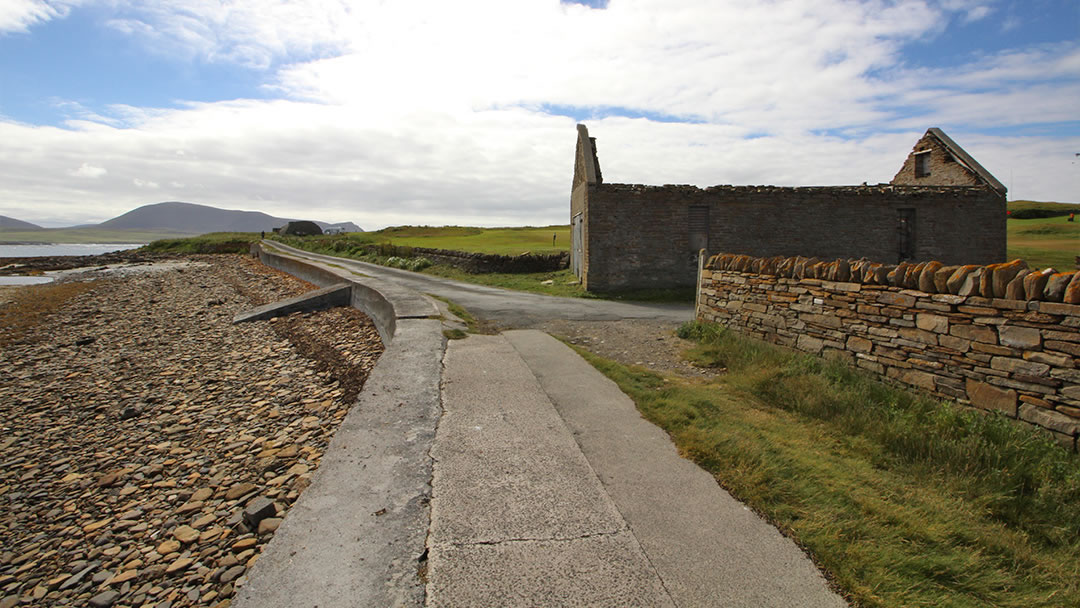
Stromness Lifeboat and the Life Saving Brigade
The first RNLI lifeboat in Orkney began to serve the waters around Stromness in 1867, and a year later it was joined by Orkney’s first Life Saving Brigade. The first lifeboat shed and slip can still be seen at Ness, but another shed replaced it in the harbour, where it was easier to launch the lifeboat in rough tidal and weather conditions.
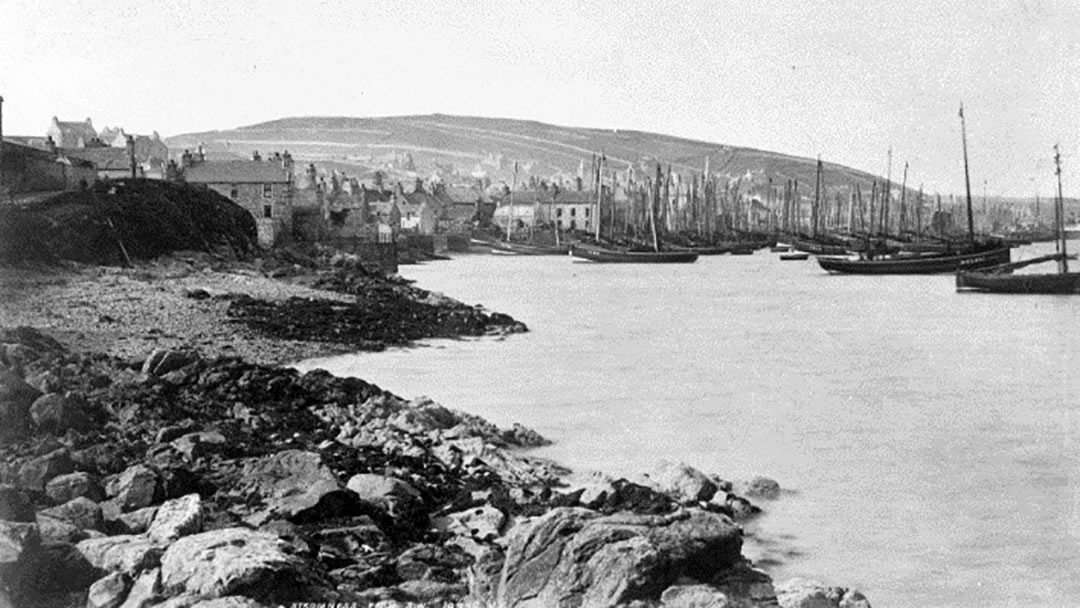
The Herring Boom
The Herring Boom came to Stromness in 1888 when great shoals of herring arrived in the west of Orkney. During the summers fast ‘Zulu’ boats from Banff and Buckie crammed the harbour, fishing all night and arriving back with their catch in the morning.
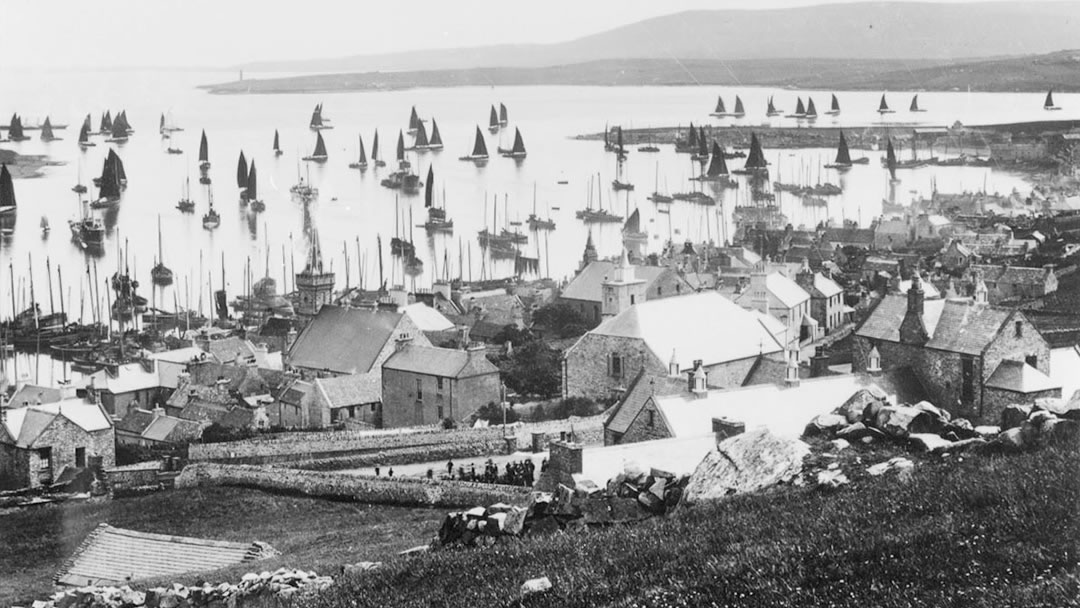
An extra 4 to 5 thousand people, fishermen and gutters, lived in Stromness during that time. Folk in Stromness made a lot of money leasing nearly every pier in the town to fish curers! Temporary wooden piers were erected at the Point of Ness to meet demand, but by 1914 it was all over.
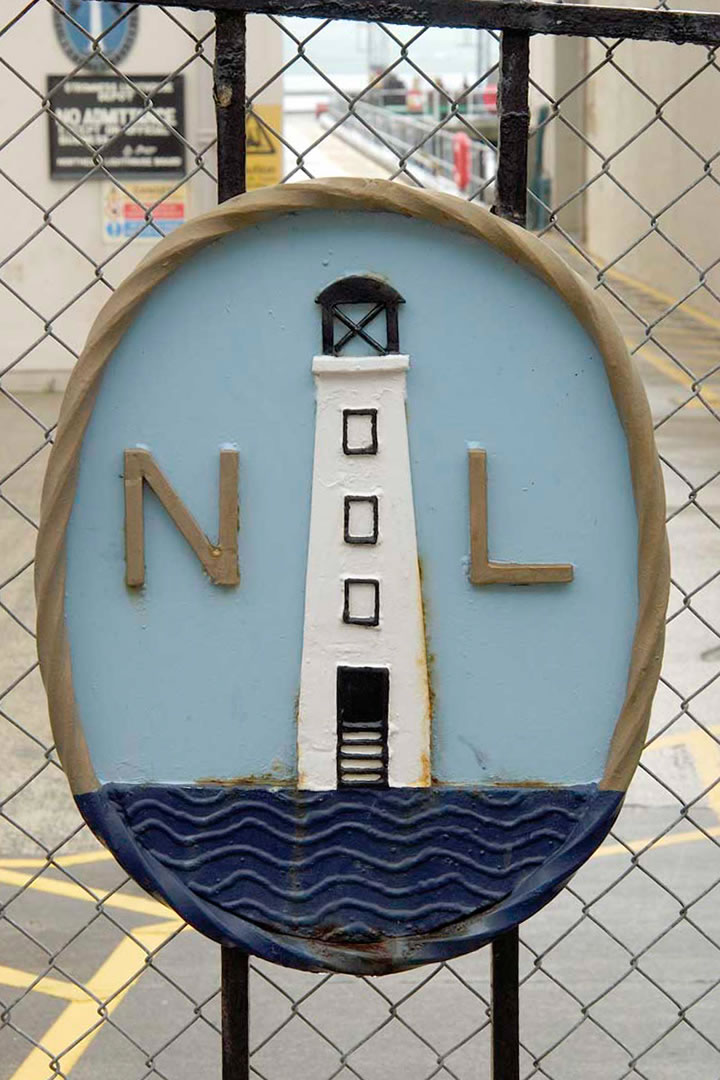
The Pole Star
The Hoy Sound High and Hoy Sound Low Lighthouses were built on Graemsay in 1851 to guide shipping into Stromness’ sheltered waters. The Northern Lighthouse Board support vessel Pharos became a regular visitor to Stromness and then in 1893 the first Pole Star tender came to the town bringing employment to many Stromness men. The Lighthouse Pier is based in the South End of the town, but has been sold in the years following the automation of lighthouses.
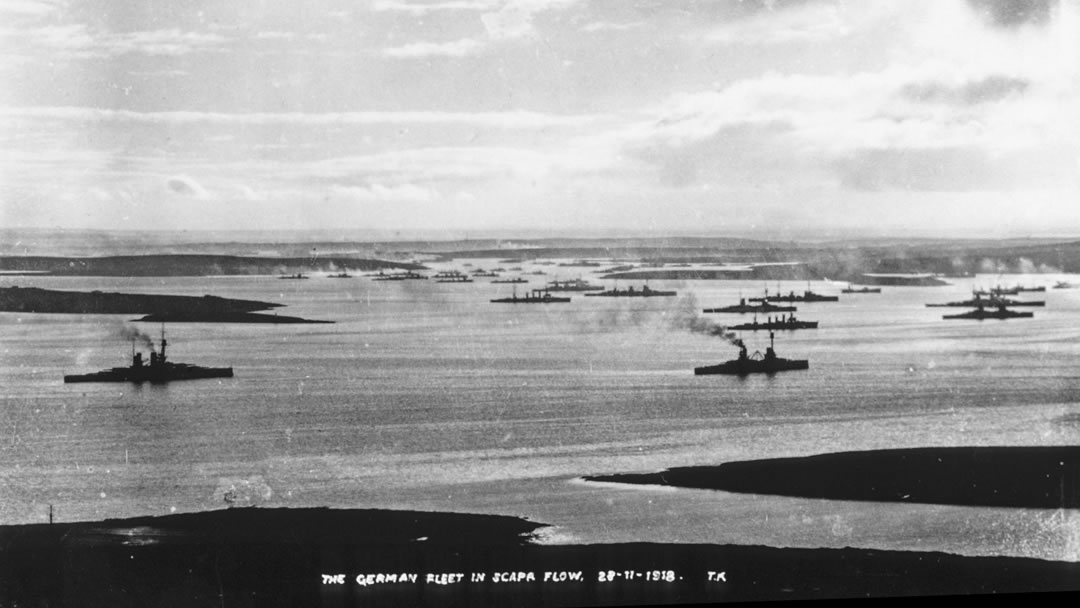
The First World War
During the First World War Scapa Flow became the northern base for the Royal Navy’s Grand Fleet. Stromness became a Naval HQ. All the visiting servicemen gave Stromness the reputation of being a riotous town. The wrecks of the interned German Fleet, scuttled and left at the bottom of Scapa Flow, are still explored by divers who visit Stromness every year.
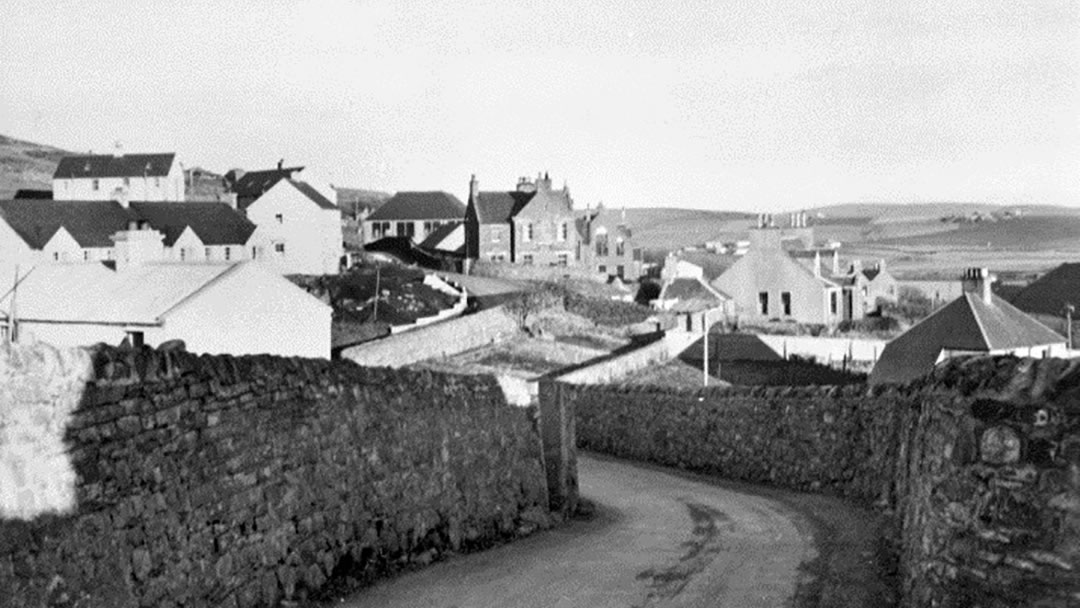
A dry town
In the late 19th century there was a temperance movement which began in America and Scandinavia. Its influence reached Stromness where there were temperance associations, the Good Templars, followed by the Oddfellows and the Rechabites. Joining was very popular because it gave you a great social life, with access to meetings and colourful events. However total abstinence from alcohol was required to join.
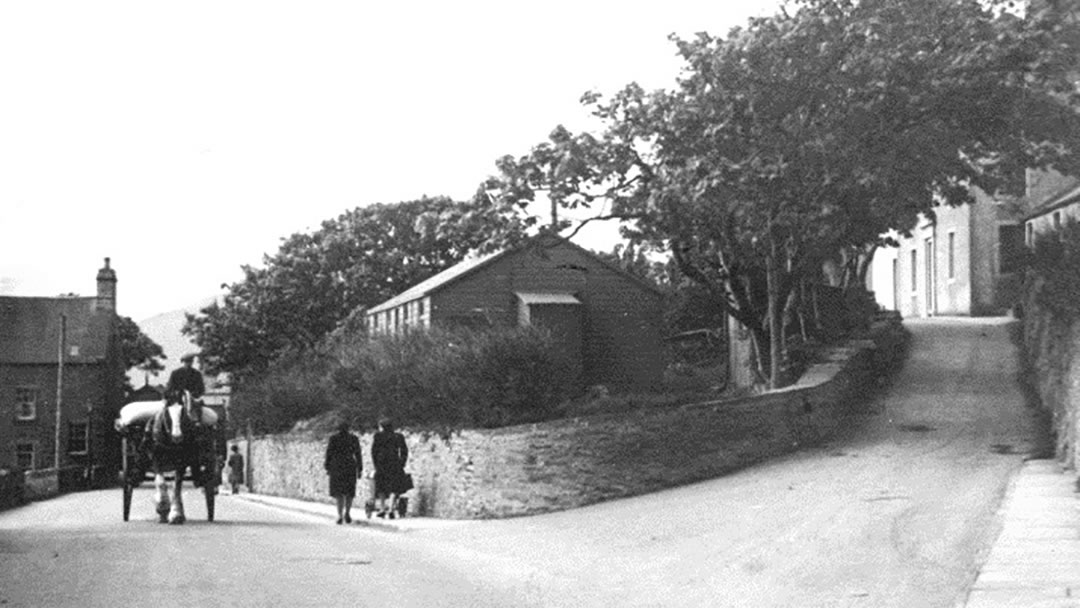
There was a drink problem among many people in Stromness, and there had been terrible fighting and drunken behaviour from marines and navvies during the First World War. So in 1920, the temperance movement voted the town ‘dry’ and it remained that way until 1947. Stromness had been famed for its taverns and alehouses and suddenly there weren’t any. Trade in the town was affected very badly.
Post War Depression
Following the First World War there was a period of depression in Stromness. Stanger’s Boatyard closed in 1924 and hopes for another Herring Boom in 1927 came to nothing. The North Pier was built in the 1920s to provide facilities for Thornley Binders; a firm processing seaweed for chemicals. Thornley Binders went bankrupt in 1927.
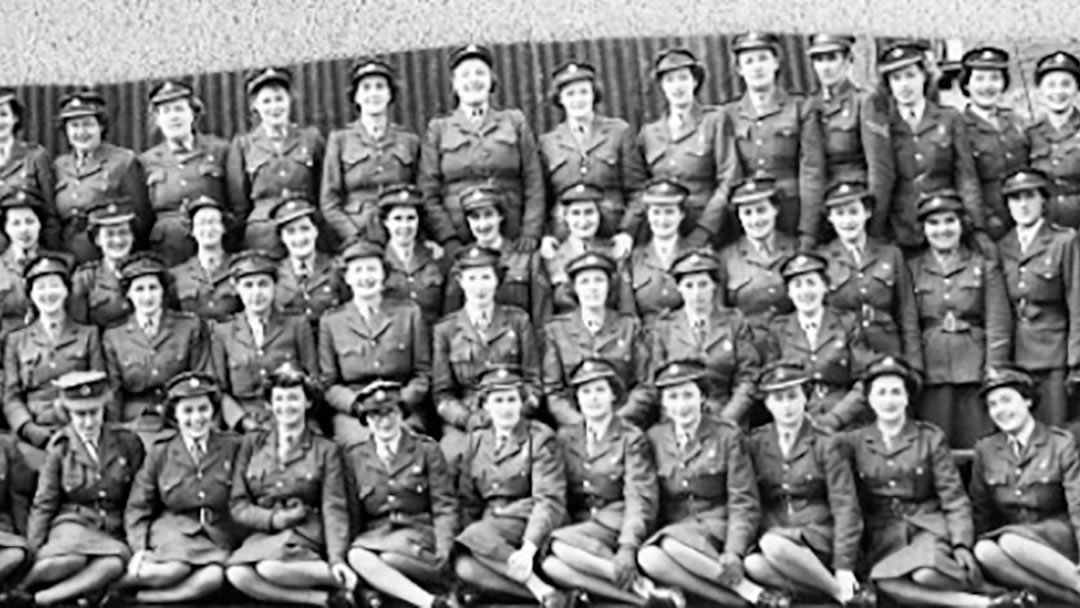
The Second World War
During the war years Stromness was transformed. To protect the naval anchorage in Scapa Flow from air attack service men and women were stationed around the town and the Stromness Hotel became the army headquarters for Orkney and Shetland. There were camps all around the town, with picture shows, famous visitors and drinking parlours.
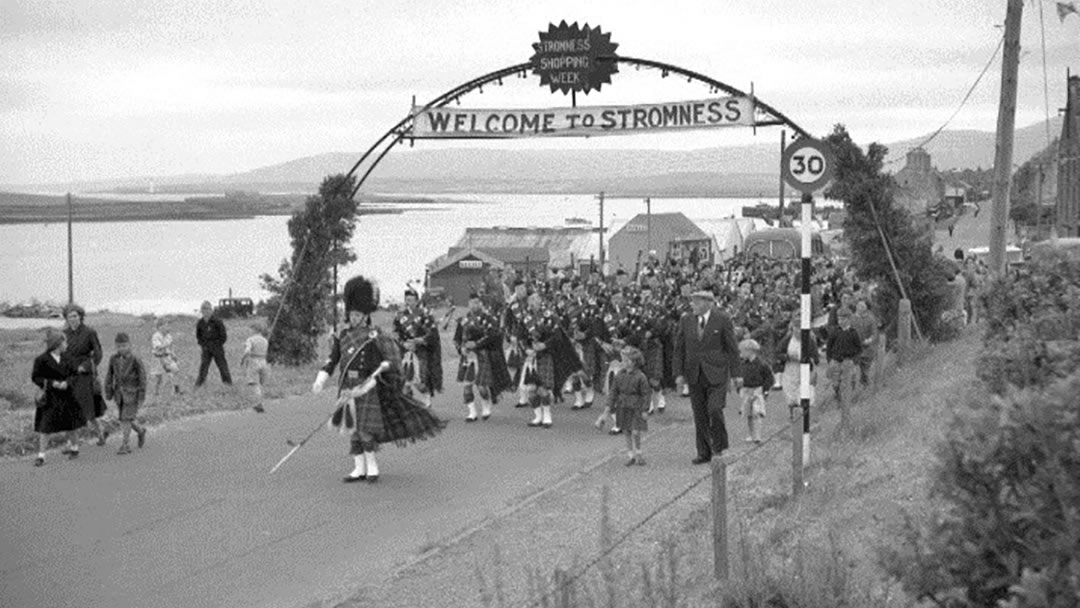
Since the Second World War
When the Second World War ended, the folk of Stromness deeply missed the conviviality and the busy social lives they had had. The pubs reopened, and in 1949 the Chamber of Commerce created Stromness Shopping Week; a carnival week to encourage trade in the town, which still survives.
New houses were built at Cairston and Grieveship, the Ferry Road was built in the 1950s, and Stromness Swimming Pool was built in 1969.
In 1959, the Orkney Fisherman’s Society was set up as a co-operative group, processing crab meat and shellfish, sending it to Europe and Japan. Stromness businesses such as Robertson’s Orkney Fudge and Stockan’s Oatcakes began to ship their products all over Britain.
The Pier Arts Centre, founded in 1979 in the former premises of the Hudson’s Bay Company recruiting agent, holds a permanent collection of internationally known British artists, and a programme of temporary exhibitions and events.
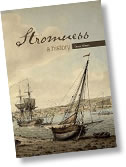
In 2004 Stromness Marina was opened to provide facilities for visiting yachts. In 2014 a pier was constructed beside Copland’s former dockyard for the renewables industry; Stromness is now a hub for the renewable energy industry.
With grateful thanks to Bryce Wilson for his help in writing this article. To read more about Stromness’ past, read his fascinating book ‘Stromness: a history’, available at Stromness Books and Prints, The Orcadian Bookshop and other good bookshops.
 By Magnus Dixon
By Magnus DixonOrkney and Shetland enthusiast, family man, loves walks, likes animals, terrible at sports, dire taste in music, adores audiobooks and films, eats a little too much for his own good.
Pin it!